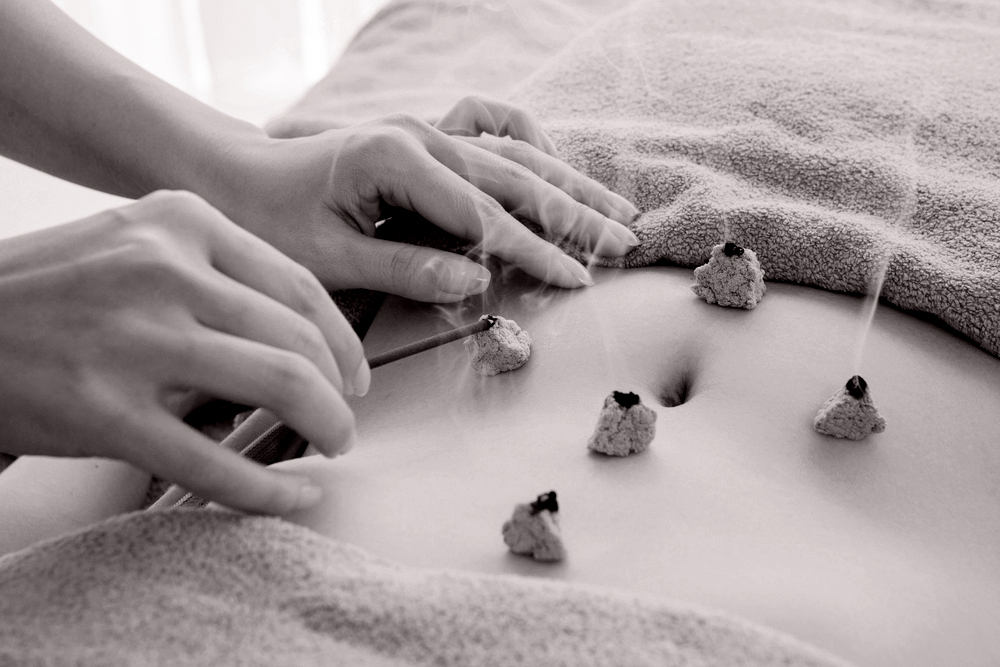Hmmm, what’s this? According to the book, “Chinese Acupuncture and Moxibustion,” China entered the clan commune period between about 100,000 and 4,000 years ago. Ancient literature tells us that this time period is the origin of acupuncture and moxibustion. Yes, the stone age and at this time acupuncture “needles” were made of stone, not for inserting of course! Fu Xi is credited for the creation of the therapeutic techniques with stone needles, and Huang Di for his invention of acupuncture and moxibustion. The original intention of Chinese medicine is not only for the treatment of dis-ease, but as preventative medicine. This article will focus upon moxibustion, a warming type of therapy using a particular herb.
When performing moxibustion, an acupuncturist uses the herb Artemisia Vulgaris, a lightweight and fluffy plant (“moxa wool”) that is placed directly on the skin, on the end of the needle, or on top of the skin with a barrier in between such as ginger, garlic or salt. It can also be rolled into what looks like a long cigar and held above the skin over acupuncture points. Moxa wool is then lit and burns down until the person says that it’s hot, and the herb is removed. It is for warming an area or acupuncture points, not for burning the skin.
Moxibustion provides many therapeutic benefits by inducing the proper flow of blood and qi (there are many types of qi, pronounced “chee”. In a nutshell, qi involves the energy required in any transformative process). For example, ‘proper flow’ may involve directing the qi downward when there is a headache. Since the human body is a constant transformative process, regular moxibustion keeps the respiratory, digestive, circulatory, nervous and immune systems in our body regulated and strong. Modern research has proven that moxibustion directly on the skin surface increases the white blood cell count, which tells us that this therapy induces the immune system’s response to fight off pathogens. Moxibustion also nourishes the system following debilitating weakness and exhaustion. The use and functions of moxibustion are similar to the functions of the human body, it is an event filled with transformative processes. Acupuncturists often use moxibustion to address the following health concerns:
-restoration following chemotherapy treatments; people report a decrease in side effects and an increase in white blood cell counts
-digestive disturbances
-cold/flu
-trauma and exhaustion
-menstrual pain and irregularity
-chronic illness
-some types of headaches
-joint pain/certain types of pain
More and more I find myself treating people who are experiencing high levels of stress and exhaustion. I have found moxibustion to be an effective and non-invasive tool to remedy not only symptoms but the root cause of disharmony.
For more information, please email me at daisylear@gmail.com or call me at 303.587.3557
